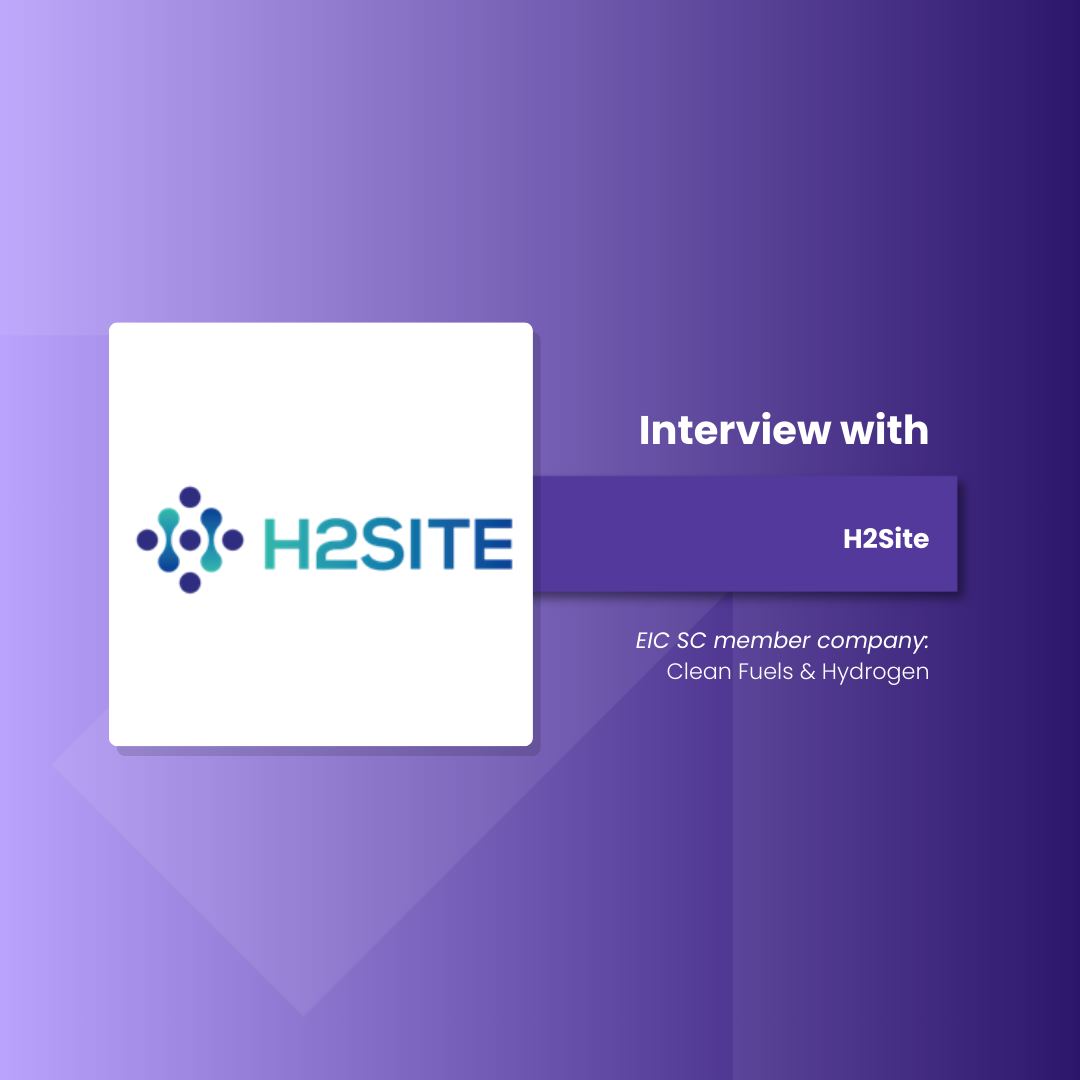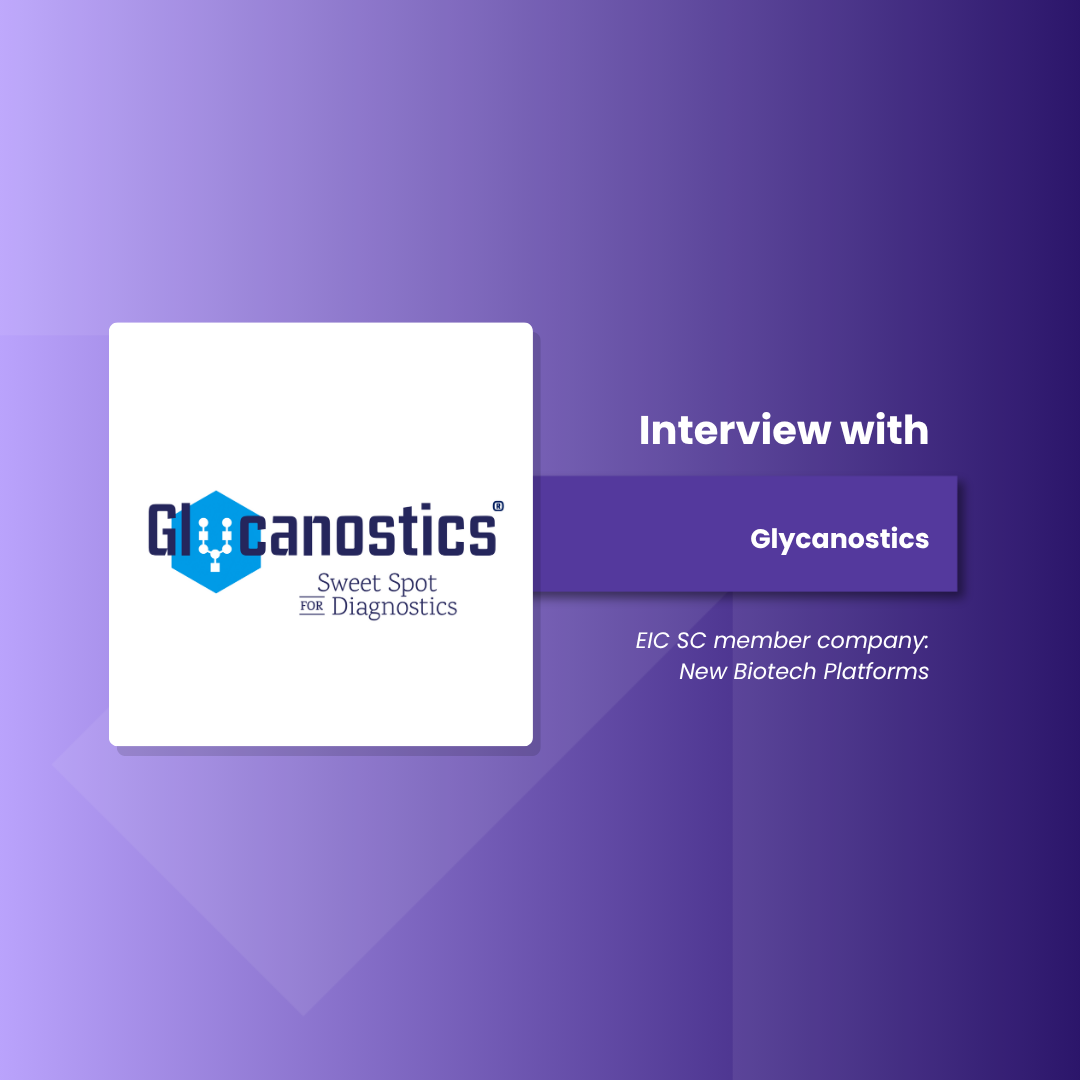27 Oct 2025
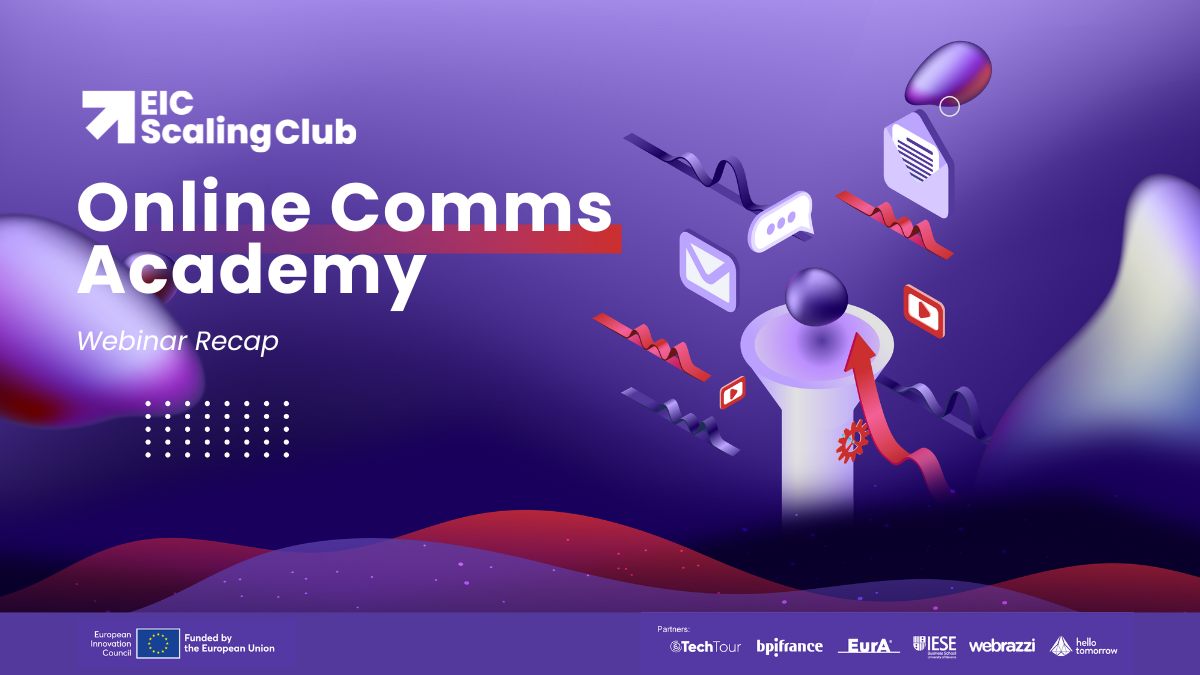
On October 1, the EIC Scaling Club team hosted an online Comms Academy to support club members in their online international visibility efforts. The event was a smashing success – with over 100 registered participants eager to soak up insights from the expert keynote and panel.
The event was kicked off by Krista Krumina (from the EIC Scaling Club comms team, and also writer at Business Insider), who shared a keynote with insights on how to get your scaleup covered in international media. This was followed by a panel discussion moderated by the EIC Scaling Club’s Julia Gifford, talking to journalists Lucy Adams from Tech.eu and Adam Bluestein, contributor at FastCompany, Bloomberg, Fortune, New York Times, and more. The event was rounded out by a Q&A session, where EIC Scaling Club members were able to ask the journalists their questions to level-up their media game, and develop relationships with them at the same time.
If you missed the Comms Academy, don't worry, you can catch up by watching a recording on the EIC Scaling Club YouTube Channel, or scroll down to the bottom of this article to watch it here.
Here are a few insights that came out of the EIC Scaling Club Comms Academy:
When thinking about online visibility, many think of press releases. Press releases are great when you have hard news – like funding news, major scientific breakthroughs, merger or acquisition news. But that kind of news is rare. In the meantime, you can use other tools to gain visibility. That can include:
- Opinion pieces
- Commentary
- Human interest stories
- On-stage, public speaking opportunities
- Press events
- Data-driven stories
Your PR activities can look like more than press releases; you just need to find what’s interesting about your company and its people.
Try to meet journalists in person, ideally at events you’re both at. You don't need to immediately start selling your company (in fact, please don't do that, just act like a regular person). But do have a chat, and then later on, when you have news, you can remind them that you met at such and such an event.
Both Lucy and Adam mentioned that they’ll be at Slush and Oslo Tech Week this year, so if you’re at these events, you can find them and say hi.
Offering a journalist AI-generated responses is one of the easiest ways to alienate them. Think about it – it’s their career, their artform, to craft a narrative with words. By offering them something that an LLM has written is essentially giving them the least-qualitative ingredient possible to make their art.
As Krista put it, “if they wanted AI to write it, they would’ve asked ChatGPT themselves.”
Instead, do take the time to put together a thoughtful response, something original from you based on your experience and knowledge. No AI will ever be able to replace that.
Lucy Adams shared that an inside joke (or rather, pet peeve) at Tech.eu is receiving funding news on the same day that it’s announced. Why is this annoying? Because it throws off their planned schedule when they have unplanned news coming in.
What’s the best approach? Send the news in advance with an embargo (but as Adam added in our chat, make sure to check that the journalist agrees to the embargo).
Media relations is a long game, and it’s all about interpersonal connection. For that reason, it’s helpful to stay in touch with a few that are most likely to write about you and your industry. This helps build trust, and most importantly, it builds recognition. When you’ll have news to share, that door will already be open to you.
“I can't emphasize enough the value of maintaining ongoing relationships with journalists. Even if you can find a half-dozen journalists to keep in touch with. I'm happy to talk to an interesting company that’s too early for us to cover because I know that maybe 6 months or a year down the road, I know they’ll be ready with the kind of news that we cover, and I’ll already know them and their story.” - Adam Bluestein.
Each journalist is looking for something slightly different, and the way to intrigue them will differ. This is particularly important as, as Lucy mentioned, at Tech.eu they receive about 100 valid pitch emails per day. You need to stand out and offer them exactly what they need.
The best way you can ascertain that is by following their work to see what they like to write about, but even easier is to simply ask them. And we did!
What is Lucy looking for when it comes to catching her attention?
“I'm looking for substance, especially as there are so many press releases these days made with generative AI. Try and be concise in what you mean, reduce hype-speak and speculative language. Get as many statistics and research in there as possible. We’re trying to understand how things work, and where you fit in your industry, and whether your work is transformative.”
What makes a good pitch for Adam?
“Be concise. Be as personal as you can be, so that I feel like this isn't a generic pitch that can be sent to others. Understand who the journalist works for and pitch something that’s appropriate to that outlet. Make sure you’re able to provide the context for what you’re telling me. Try to help me understand why it matters in the world or industry and why it’s a unique breakthrough. If it’s interesting, I’ll definitely follow up and ask you more.”
The last tip we’ll end on is to reiterate that journalists do want to be connected with you on Linkedin, particularly if you’ve both attended the same event (such as the Comms Academy). The one tip that Adam emphasized, however, is that he would like to see a note attached explaining the context of the connection, so that he knows who you are and why you’re connecting. That could be as simple as “hey, I was listening to you at the EIC Scaling Club Comms Academy, I'm the co-founder of [x] startups, would love to stay in touch.”
Give it a try!
Discover more tips by watching our full webinar
The Comms Academy was stuffed with helpful tidbits. While we would love to list them all here, that’s just not physically possible.
One thing you can do is to watch the full recording on our YouTube account, which we highly recommend you do.
Watch the full recording, complete with an audience Q&A session, here:
About the EIC Scaling Club
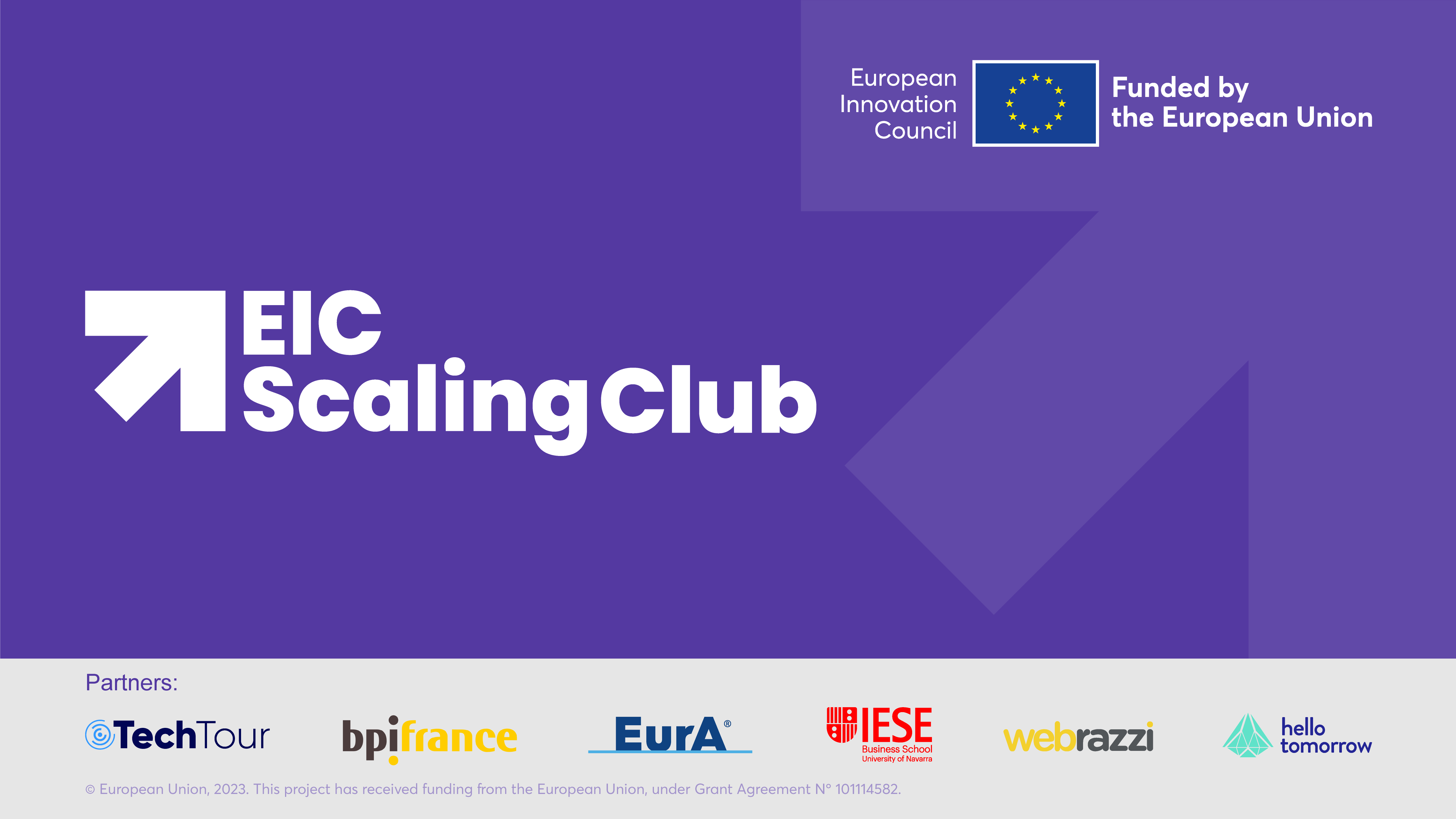
The EIC Scaling Club is a curated community where 120+ European deep tech scale-ups with the potential to build world-class businesses and solve major global challenges come together with investors, corporate innovators and other industry stakeholders to spur growth.
The top 120+ European deep tech companies will be carefully selected from a pool of high-growth scale-ups that have benefitted from EIC financial schemes, other European and national innovation programmes, and beyond.
The EIC Scaling Club is an EIC-funded initiative run in partnership by Tech Tour, Bpifrance (EuroQuity), Hello Tomorrow, Tech.eu (Webrazzi), EurA and IESE Business School.
Subscribe to our newsletter here to stay up-to-date!
Related Articles
Recent Articles
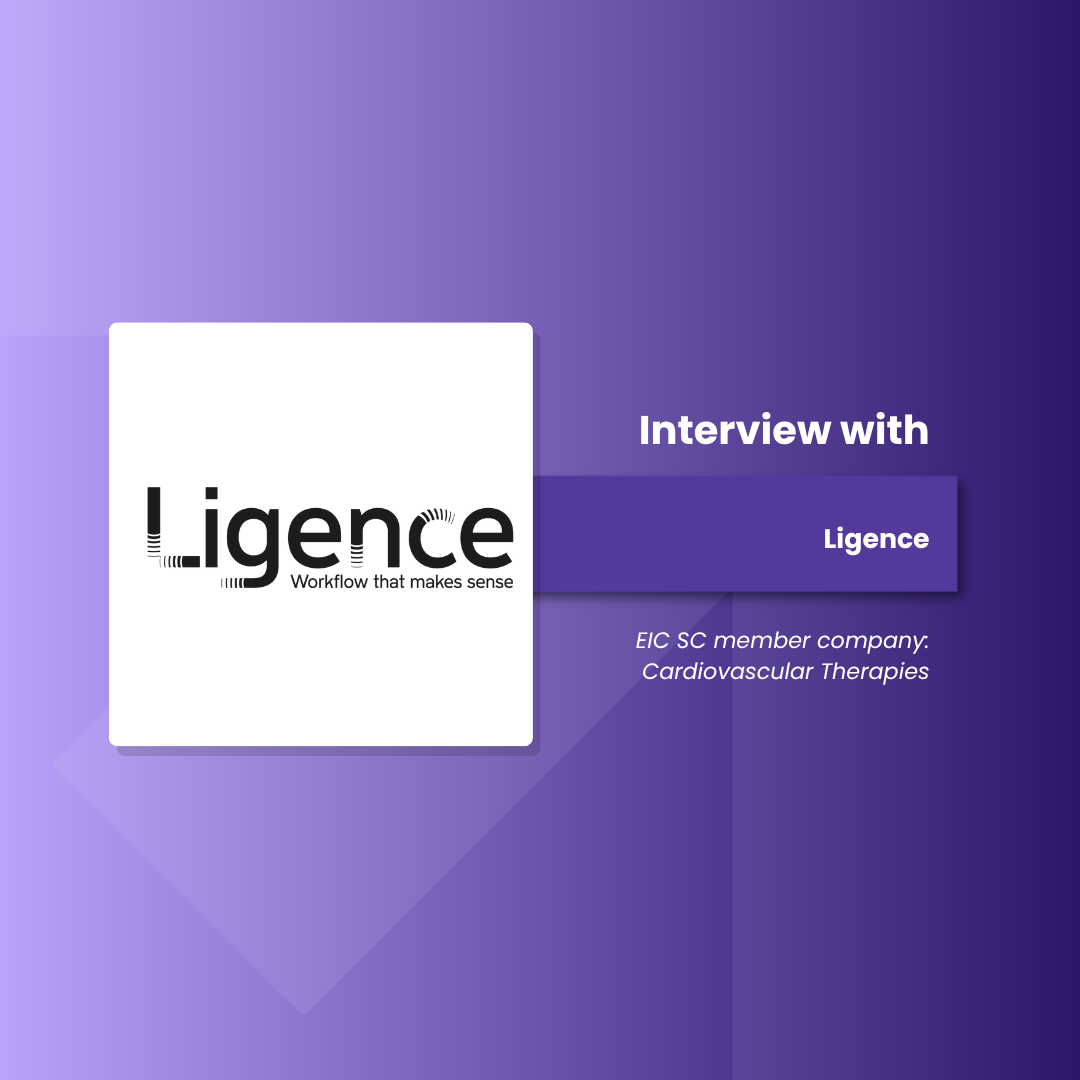
Ligence: Bringing AI innovation to the heart of cardiac diagnostics
20 Nov 2025

U-Space raises €24 million to accelerate Europe’s industrial capacity for smallsat constellations
13 Nov 2025


